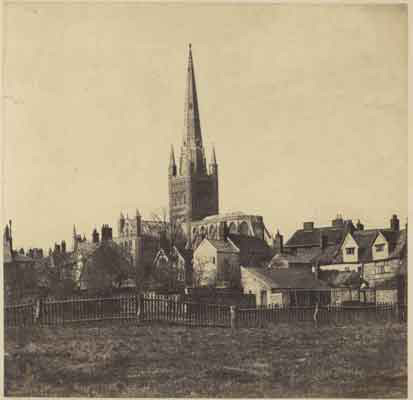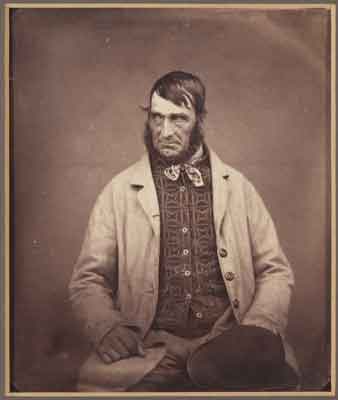1840 - 1860

G. R. Fitt
Norwich Cathedral
Albumen print, 1854
[Private collection]
 William Bolding
William BoldingWilliam Cook
Albumen print, late 1850s
[Norfolk Heritage Centre]
The albumen print is a positive image, invented by the Frenchman Louis-Désiré Blanquart-Evrard in 1850. The image was made of silver particles in a coating of hardened egg white on paper. Thin paper was coated with salted egg white (albumen) and sensitized to light by adding a solution of silver nitrate. When dry, the sensitized paper was placed in contact with the negative in a printing frame and exposed to sunlight. The printed image was usually gold-toned to improve stability and appearance and then fixed using ‘hypo’ (sodium thiosulphate), washed in water and dried.
The surface of the albumen print was smooth and glossy and the image colour ranged from chocolate-to-purple brown dependent on the toning treatment. As photography expanded, albumen paper was produced commercially and in 1888 a single company, Dresdener Albumenfabriken A. G., used over six million eggs in albumen paper production.
Early photographs on paper often suffered from fading and this issue was confronted by the appointment of a ‘Fading Committee’ by the Photographic Society in 1855. They recommended adequate washing and gold toning of prints to reduce fading whilst recognising the on-going fading produced by industrial atmospheric pollution.
In 1842, John Herschel discovered another process; the cyanotype or blue print and Anna Atkins made spectacular cyanotypes of British Algae. Cyanotypes relating to Norfolk from the early period have yet to be seen, although second generation images, 1880s and later, are not uncommon.